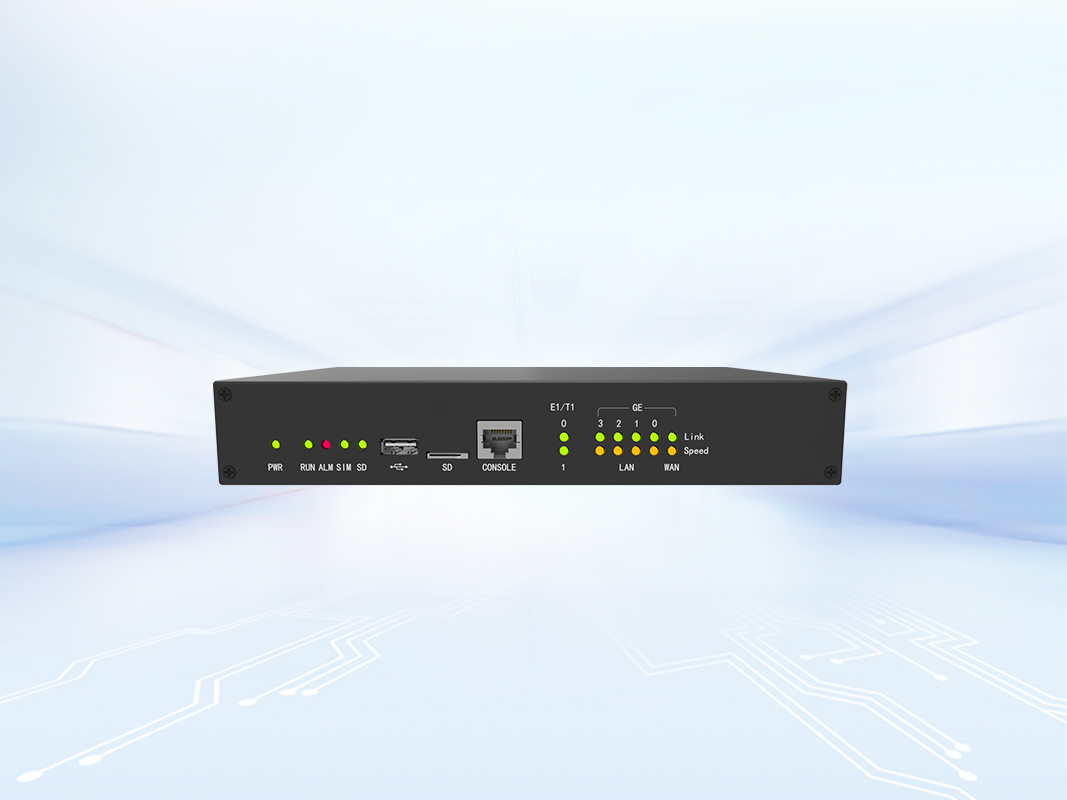SBC50
It supports 50 concurrent SIP sessions and transcodes up to 50 concurrent calls, and allows encrypted sessions via TLS and SRTP. The session border controller supports transcoding of G.729, G.723, G.711, G.726, iLBC, AMR and OPUS. Besides, it also supports WebRTC, allowing desktop and mobile browsers to initiate and receive calls to/from your SIP service over websocket and W ebRTC completely transparently.
SBC50 offers the following features:
- SIP Sessions and Transcoding: The system supports up to 50 SIP sessions, allowing for simultaneous connections between devices using the Session Initiation Protocol (SIP). It also supports up to 50 transcoding sessions, which enable the conversion of media streams between different codecs.
- WebRTC2SIP: This feature allows WebRTC clients to function as a phone with audio capabilities. WebRTC (Web Real-Time Communication) is a technology that enables real-time audio and video communication in web browsers.
- SIP Trunks and Flexible Routing Rules: The system supports SIP trunks, which are used to connect a VoIP (Voice over IP) system to the Public Switched Telephone Network (PSTN). It also offers flexible routing rules, allowing for customized call routing and access to IMS (IP Multimedia Subsystem) networks.
- VoIP Firewall: An embedded VoIP firewall is included, providing security measures to prevent Denial of Service (DoS) and Distributed Denial of Service (DDoS) attacks specifically targeting VoIP services.
- Bandwidth Limitation and Dynamic White/Black List: The system allows for bandwidth limitation, which helps manage and control the amount of network resources allocated to VoIP traffic. It also supports dynamic white and blacklisting, allowing administrators to block or allow certain IP addresses or ranges.
- QoS, Static Route, NAT Traversal: Quality of Service (QoS) mechanisms are provided to prioritize and ensure the quality of VoIP traffic. Static routing capabilities allow administrators to define specific paths for network traffic. Additionally, Network Address Translation (NAT) traversal functionality is included to facilitate communication between devices behind NAT devices.
- Remote Upgrade and Configuration: The system allows for the import and export of remote upgrade and configuration data, making it easier to manage and maintain the system across multiple locations.
- User-Friendly Web Interface and Multiple Management Ways: The system offers a user-friendly web interface for easy administration and configuration. It also provides multiple management options, allowing administrators to manage the system using various methods such as command-line interface (CLI), SNMP (Simple Network Management Protocol), or other supported protocols.
Product Details
Physical
• Ethernet Ports:
4* 10/100/1000M Base-T Ethernet ports
1* 10/100/1000M Base-T (Admin)
• 1* USB
• 1* TF Card Slot
• Console
1* RS232, 115200bps, RJ45
Capabilities
• Concurrent Calls
Supports up to 50 SIP sessions
• Transcoding
Supports up to 50 transcoding calls
• Registrations
Maximum SIP registrations: 1000
• CPS for Registration
20 Registration per second
• SIP Trunks
Unlimited SIP Trunks
Media Capabilities
• Voice, FAX support
• Codecs: G.729, G.723, G.711, iLBC, AMR, OPUS
• RTP Transcoding
• Pass-through fax
• No RTP detection
• One-way audio detection
• RTP/RTCP, SRTP
• RTCP statistics reports
• DTMF: RFC2833, SIP Info, INBAND
• Silence Suppression
• Comfort Noise
• Voice Activity Detection
• Echo Cancellation
• Adaptive Dynamic Buffer
VoIP
• SIP 2.0 compliant, UDP, TCP, TLS
• SIP trunk (Peer to peer)
• SIP trunk (Access)
• SIP Registrations
• B2BUA (Back-to-Back User Agent)
• SIP Request rate limiting
• SIP registration rate limiting
• SIP registration scan attack detection
• SIP call scan attack detection
• SIP anti-attack
• SIP Header manipulation
• SIP malformed packet protection
• Multiple Soft-switches supported
• QoS (ToS, DSCP)
• NAT Traversal
Security
• Prevention of DoS and DDoS attacks
• Control of Access Policies
• Policy-based anti-attacks
• Call Security with TLS,SRTP
• White List & Black List
• Access Rule List
• Embedded VoIP Firewall
Environmental
• Power Supply: DC 12V
• Power Consumption: 10W
• Operating Temperature. 0 ℃ ~ 45 ℃
• Storage Temperature: -20 ℃ ~80 ℃
• Humidity: 10%-90% non-Condensing
• Dimensions (W/D/H): 227×147×39mm


